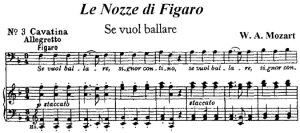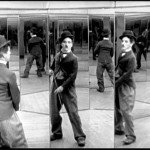
Why Music? Memory and Music Layers
Dear Reader
This blog is Part 2 of a 4-part presentation of my script for the Music and Memory lecture, which was broadcast on BBC Radio 3 on September 27th. If you missed Part 1, you can read Part 1 of Music and Memory lecture from BBC Radio 3 by following this link. Part 1 is all about the importance of melody. Part 2 goes beyond melody…
——————————————-
Now, continuing our ‘Music and Memory’ concert I would like to broaden ideas from melody to consider harmony and counterpoint – how do they all come together to make a strong memory?

During the Beethoven we’ve just heard [Beethoven Variations on ‘Se vuol ballare‘ from Mozart’s ‘Figaro’ in F major O.40], you will have recognised that iconic Mozart melody, and perhaps had a little mental or even out loud sing along.
As you sang, your musical memory provided you with the upcoming notes on a second by second basis. The beauty of the Beethoven variations is how he plays with those upcoming expectations as they arrive, using your core memory as a template.
The manipulation of expectation in music is by no means limited to melody. It extends to the richer fabric of music expressed by harmony and counterpoint.
Below the surface of the melody a world of deep movement in sound exists. This world helps to drive a piece and give it a wider context. Over time, it also helps you create one of the most durable forms of memory that exist.
Scientific studies have taught us that while our responses to melody can begin in the womb our appreciation and understanding of harmony and counterpoint take a little longer to develop.
This more complex appreciation of the musical syntax of any culture, like verbal grammar, is learnt as we develop, through simple exposure to the world around us.
As we hear or learn music that conforms to a particular syntax, we pick up statistical knowledge of musical variation that goes beyond motif: more complex structures that rely on movements across, and temporary violations of, our growing inner knowledge of musical syntax.

A memorable piece of music constantly refers back to our lifetime knowledge of musical syntax, which is stored safely away in our long-term memories.
These layered rules of music promote deeper encoding of both the music we hear as a whole and its motifs, as they are emphasised and played out in multiple forms within the music.
This music memory process is more than simple repetition, which in of itself enhances memory to a degree. Rather the deepest encoding of music occurs because its structures provide multiple mirrors on motif, rather like the reflections in a hall of mirrors. You hear the motif here lower down in the harmony, you hear it here floating in a different timbre, and you hear it here in the layers of counterpoint
The mental game of playing with expectation in music is one the mind plays without needing either your consent or your effort. It is as automatic as you now following the grammar of my speech.
Moreover, the brain really enjoys this game. We find brain activations related to reward and pleasure when we listen to a piece that we know well. And all these activations draw on memory, which is at the core of the musical expectation game.
To illustrate the idea of how all these deeper musical structures help to build strong memories we’ll hear the Franck Violin Sonata in A major.
 This sonata has long been thought to be a candidate for the fictional violin sonata by ‘Vinteuil’ in Proust’s great novel on the nature of memory ‘Remembrance of Things Past’. Perhaps the most well known episode from that masterpiece is Charles Swann’s sip of tea and bite of a madeleine, which spark a long-lost memory of his childhood. A much more potent memory jolt and, indeed, life changing experience, however, is delivered in the first book where Swann falls under the spell of “a little phrase” of the Vinteuil violin sonata.
This sonata has long been thought to be a candidate for the fictional violin sonata by ‘Vinteuil’ in Proust’s great novel on the nature of memory ‘Remembrance of Things Past’. Perhaps the most well known episode from that masterpiece is Charles Swann’s sip of tea and bite of a madeleine, which spark a long-lost memory of his childhood. A much more potent memory jolt and, indeed, life changing experience, however, is delivered in the first book where Swann falls under the spell of “a little phrase” of the Vinteuil violin sonata.
Proust writes – After a high note sustained through two whole bars, [I] sensed its approach, stealing forth from beneath that long-drawn sonority, stretched like a curtain of sound to veil the mystery of its incubation.
The phrase, Proust writes, ‘opened and expanded his soul’ and even ‘led him here, there, everywhere, towards a state of happiness noble, unintelligible, yet clearly indicated… And bore him off with it towards a vista of joys unknown.’ Powerful stuff!
Swann remembers this life changing musical phrase throughout his life, and it never loses its potency.
The Franck sonata works itself into one’s musical memory with its innovative large-scale design. Ideas from the first movement are mused over in the rhapsodic slow movement, which also has premonitions of two themes from the last movement. But the finale’s main theme is entirely new – and, in of itself, unforgettable.
I can’t promise you a Proust-style revelation but I invite you to tune your conscious mind into the musical structures of the Franck Sonata (one of the high points of nineteenth century chamber music) and consider how a sturdy memory can be built by its multiple musical layering. Please welcome once again, violinist Alexandra Wood and pianist John Reid [principle players of Aurora Orchestra]


